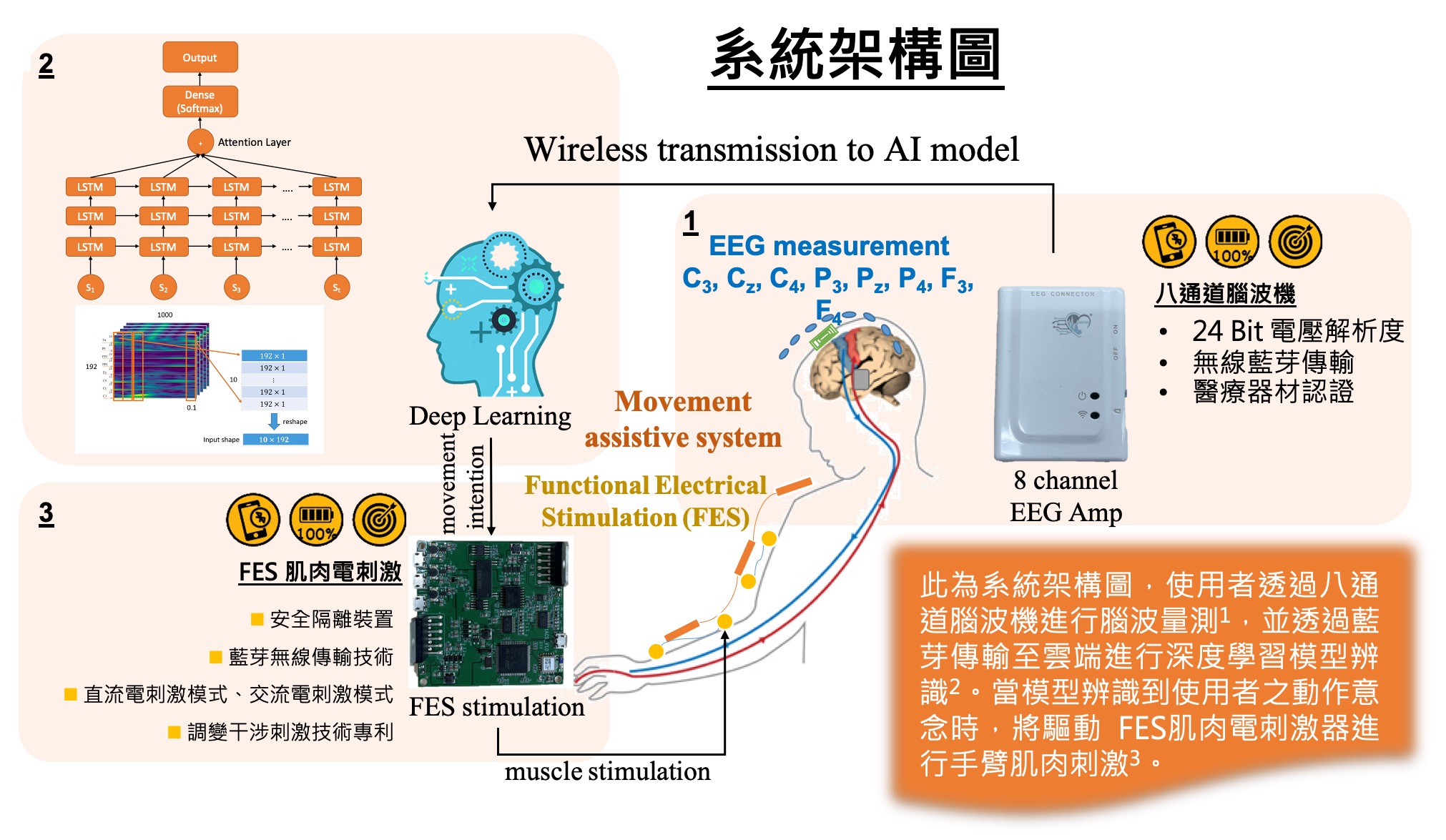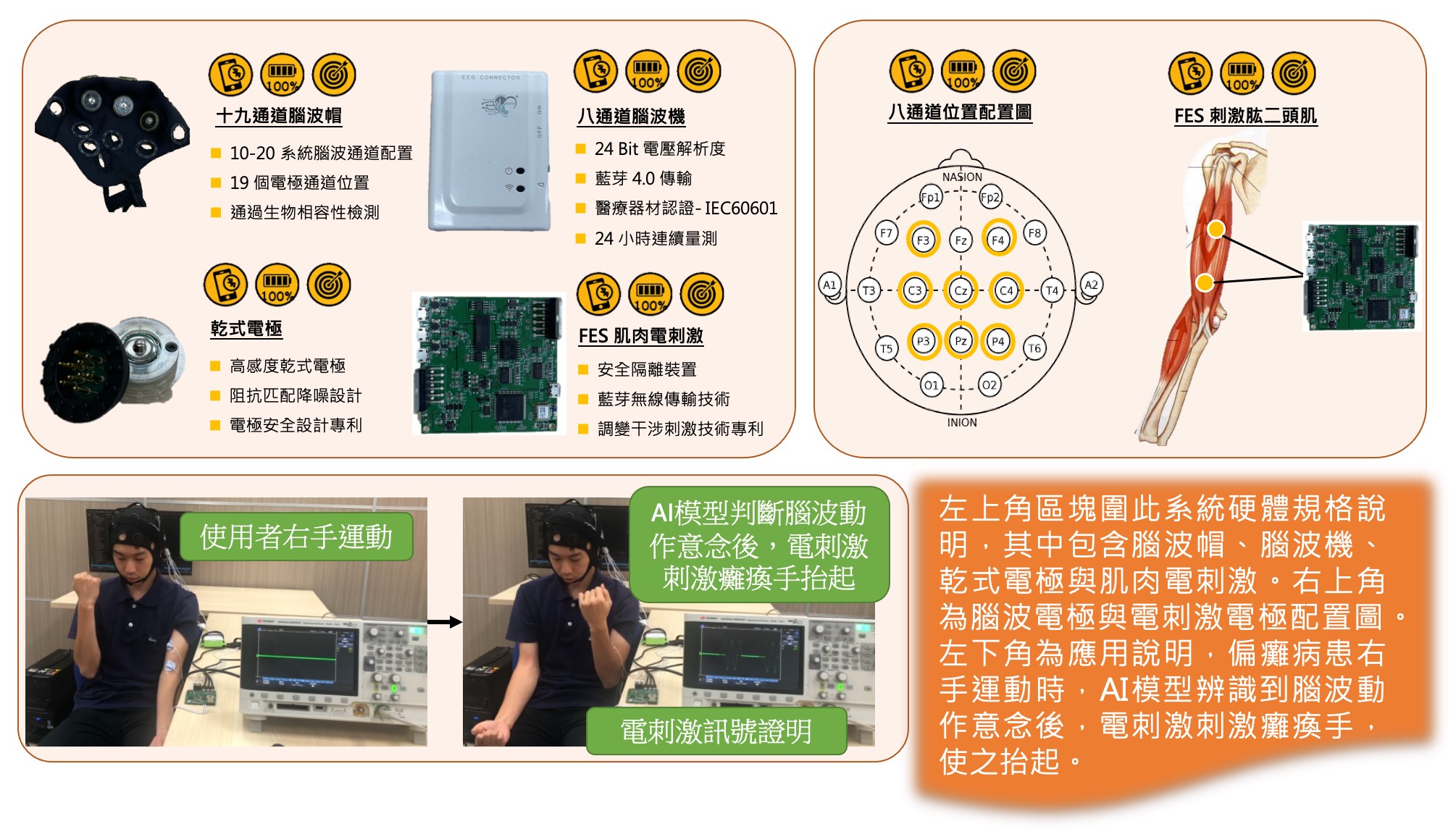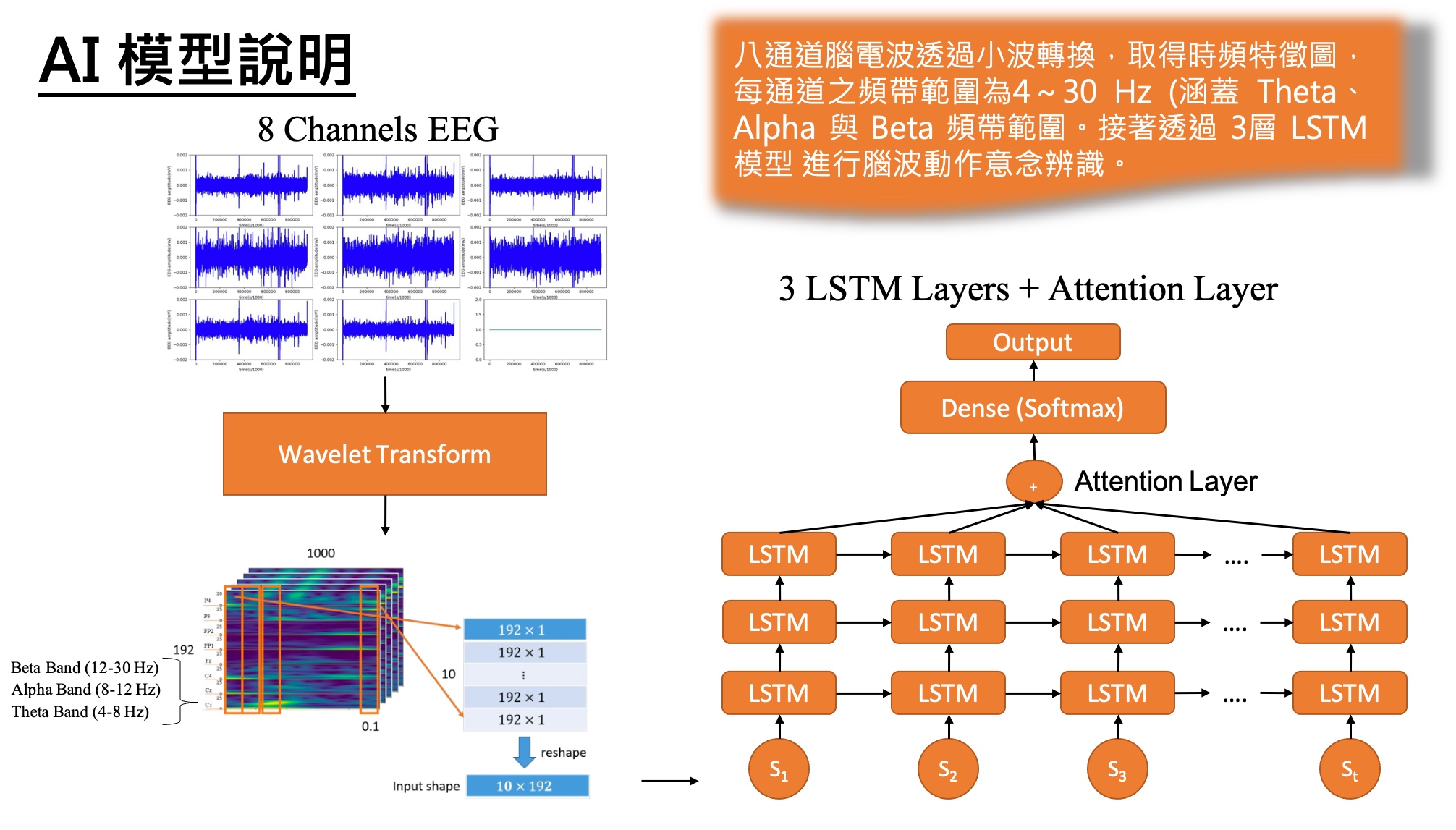| Technical Name | 腦電波控制功能性電刺激活動輔具系統 | ||
|---|---|---|---|
| Project Operator | National Central University Department of Electrical Engineering | ||
| Project Host | 李柏磊 | ||
| Summary | We have developed a movement assistive system using EEG-controlled functional electric stimulation system. Users’ movement intentions are recognized by brain computer interface, implemented by deep learning network,the detected users’ intentions are then translated into commands to trigger a functional electric stimulation (FES) device to activate users’ particular movements, such as grasping, hand raising, holding a cup, etc. In our study, we have designed our own wireless dry-electrode EEG systemour own FES system. |
||
| Scientific Breakthrough | The combination of BCIFES is a novel idea. We detected motor intention from movement-induced EEG features to drive a FES for rehabilitation purposes. We are able to discriminate more than five motor intentions. The BCI requires the help of artificial intelligencehuge computation for accurate detection. Our system utilizes innovative dry-electrode for EEG measurements. The dry-electrode EEG design can increase the safety reliabilityreduce the backflow of FES currents. |
||
| Industrial Applicability | Our proposed system not only aims to help the mobility of disabled patients. The main purpose is to help the disabled patients activate their muscles in accordance with their intentions. The system enables paralyzeddisabled patients to control their disabled limbs, prevent muscle atrophy,achieve the purposes of rehabilitationmobility aids. The idea of combining BCI using dry-electrode EEGFES can help disabled patients control their disabled limbs, provide a healthy life, regain self-esteemsatisfy their self-confidence. |
||
| Matching Needs | 天使投資人、策略合作夥伴 |
||
| Keyword | Brain Computer Interface Functional Electric Stimulation Artificial Intelligent Muscle Rehabilitation Movement Assistive System Dry Electrode Brain signals amplifier EEG Mild Long Short-Term Memory Model Muscle Atrophy | ||
- fifaworld91@g.ncu.edu.tw
other people also saw







